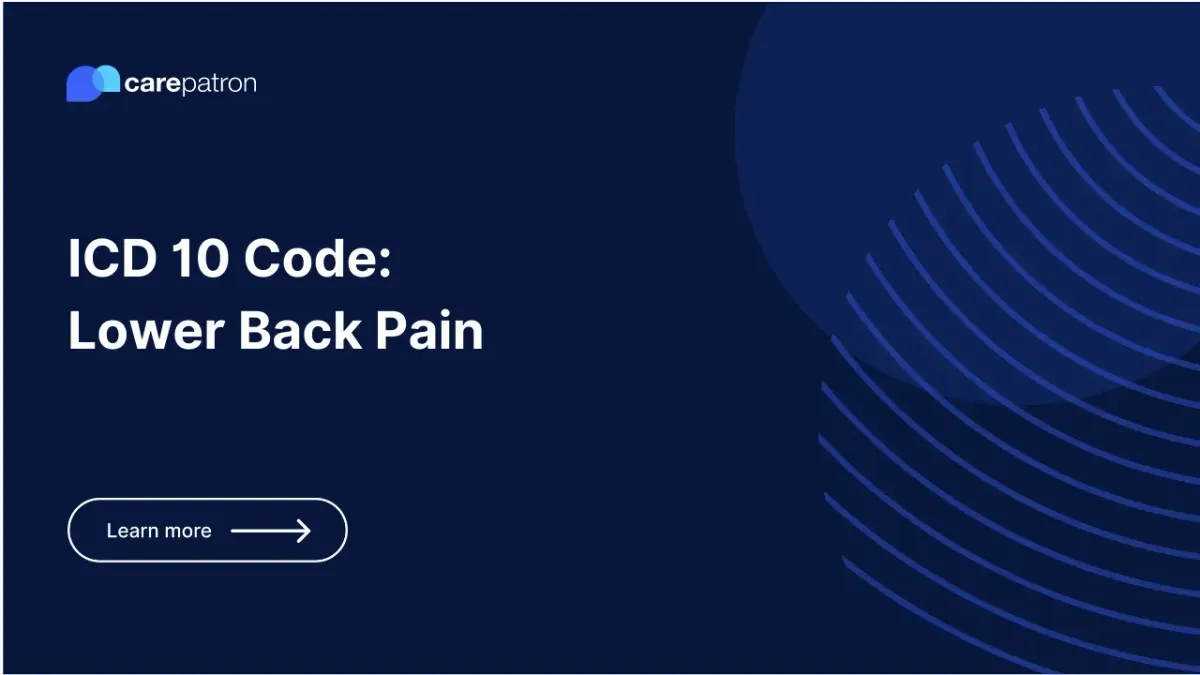
Lower Back Pain ICD-10-CM Codes
Learn about the different ICD-10 codes used for lower back pain through this guide.
Use Code
Commonly asked questions
A lower back pain ICD code should be used when a patient is diagnosed with lower back pain.
Yes, lower back pain diagnosis codes are billable so long as they are specific. This means insurance companies will reimburse healthcare providers for treating patients with lower back pain.
Physical therapy clinics can provide non-invasive treatment that improves the lower back range of motion, strength, and flexibility through stretching and exercises. Medication, including over-the-counter and prescription pain relievers, can alleviate pain and inflammation. Surgery is a last resort for severe cases or when other treatments have been ineffective. Consultation with a healthcare professional is crucial to determine the most suitable treatment for individual needs.
EHR and practice management software
Get started for free
*No credit card required
Free
$0/usd
Unlimited clients
Telehealth
1GB of storage
Client portal text
Automated billing and online payments
